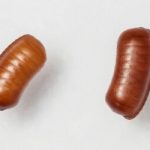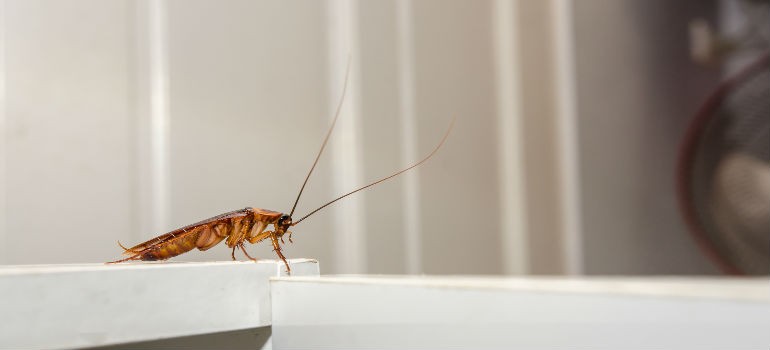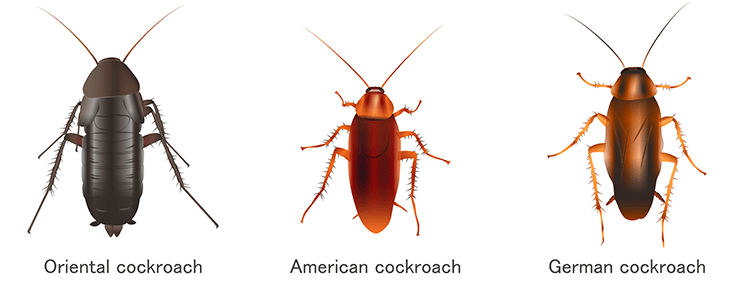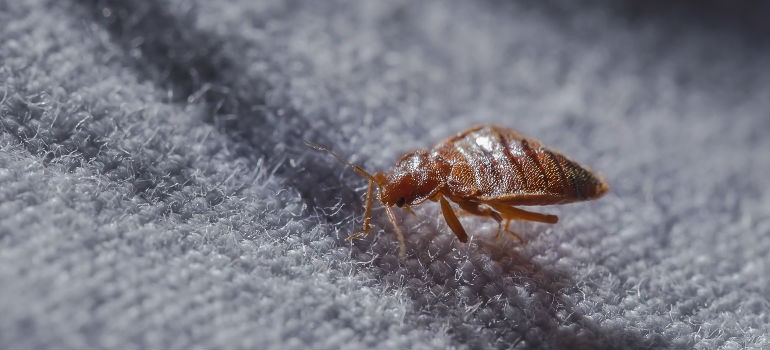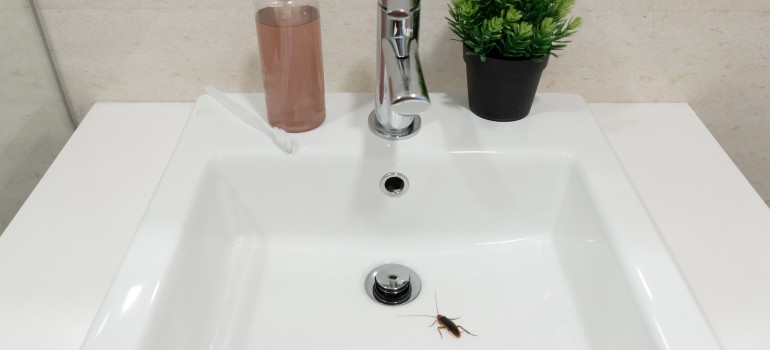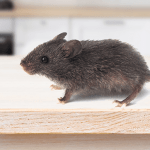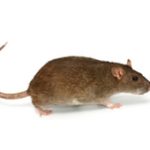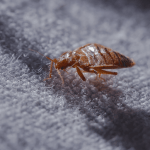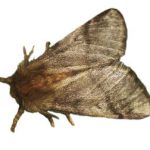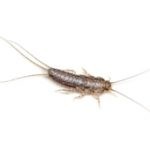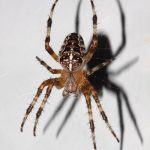Cockroach Infestation in UK Homes
Cockroach infestations in UK homes are an increasing problem, particularly in urban areas. Even though a single cockroach sighting might seem insignificant, it may indicate a larger infestation lurking inside your property. Both homeowners and tenants need to understand the signs of cockroach infestations, the risks of ignoring them, and the reasons they suddenly appear.
It is dangerous for your health and the structural integrity of your home to ignore a cockroach infestation. The longer an infestation persists, the more difficult it is to control cockroaches.
A cockroach infestation is not only a nuisance, but it can also pose a health risk. The early signs of infestation, such as droppings, musty odors, and egg casings, can be detected before the infestation escalates. Without immediate action, roach infestations can lead to disease transmission, property damage, and emotional distress.
What Conditions Do Cockroaches Prefer
Cockroaches thrive in specific environmental conditions that support their survival and breeding. They can survive on minimal food sources, feeding on crumbs, grease, food scraps, pet food, and even decaying organic matter. Roach infestation can occur as a result of improperly stored food and unattended garbage bins. Cockroaches prefer temperatures between 20°C and 30°C, making heated homes, kitchens, and bathrooms ideal environments for them.
Where clutter is, expect a colony of roaches, too. A cluttered home provides hiding spots for cockroaches. Stacks of paper, cardboard boxes, and piles of clothing create ideal conditions for them to breed and thrive.
Cockroaches prefer cracks, crevices, and sheltered locations such as behind kitchen appliances, inside cupboards, and within wall cavities. These nocturnal insects hide during the day and emerging at night.
What Does a Cockroach Look Like
Most types of cockroaches are about 4 cm or 1.6 inches long. They have a small head with 2 eyes and a flattened oval body. Usually appears in reddish or dark brown colour. Their long, thin antennae help them find food and feel their way in the dark. They can run extremely quickly with their 6 legs. Some species even have wings.
Signs of a Cockroach Infestation in Your Home
Cockroaches are nocturnal pests, so spotting them during the day indicates a severe infestation. But what does a cockroach infestation look like? Pay attention to these roach infestation warning signs:
- Cockroach droppings – The droppings of cockroaches resemble black pepper, coffee grounds, or small smudges, and they are commonly found in kitchens, bathrooms, and behind appliances where cockroaches are active. German cockroaches produce fine black dots, while American cockroaches produce cylindrical droppings. One or two cockroach poop pallets are typically invisible to the naked eye, but a cluster shouldn’t go unnoticed.
- Grease smears marks – The dark grease-like stains and smudges left behind by cockroaches are often visible on walls and surfaces. Usually, you’ll find these marks near baseboards, countertops, and hiding places. Roach smear marks is a trail of droppings, which signal other cockroaches in your home of the colony to follow towards a newly discovered source of food.
- Musty odour in the infested areas – A strong, musty odour is a sign of an established cockroach infestation. A cockroach’s pheromones attract others, and their scent can linger in confined areas such as cupboards, under sinks, and kitchen appliances. Additionally, dead roaches release a pungent smell as oleic acid leaches out. For sure, a severe infestation of cockroaches in your property will “notify” your nose.
- Cockroach eggs – Cockroach eggs, known as oothecae, are oval-shaped, brown, or reddish casings that contain multiple eggs. These are often found in dark corners, inside cabinets, or behind furniture. If you find empty egg cases, it means cockroach nymphs have already hatched and the infestation is growing. Larger species carry larger egg cases, which may be easier to spot. The cockroach eggs contained in the case are often about 30 to 40 baby cockroaches.
- Shed skin and dead cockroaches – As cockroaches mature, their exoskeleton is shed multiple times. If you find skins or dead cockroaches in your home, you are most likely dealing with an infestation. Most often, these remains are found near baseboards, under kitchen appliances, and in storage areas.
Seeing cockroaches, both babies and adults, is the most obvious indication of an infestation. You must deal with an infestation of this type immediately, as the cockroaches will not leave your home on their own.
Do Cockroaches Make Noise
Though cockroaches are generally silent, in severe infestations, you may hear rustling or light scratching noises at night, particularly in wall cavities, under sinks, or within kitchen cabinets. A faint scampering or scratching sound, especially during the night, may indicate that cockroaches have taken up residence inside your walls.
Can Cockroaches Fly
Cockroaches are a fascinating species. Even though they have wings, they don’t fly often and the ones that do aren’t usually all that good at it. Heat and cold often encourage flying cockroaches. Their large size, heavy body mass, wingspan and non-aerodynamic bodies make them incapable of speed or manoeuvrability.
Why Do Cockroaches Suddenly Appear in Your Home
Although cockroach infestations may appear suddenly, they usually result from specific factors. Even small food spills or improperly stored pet food can attract roaches into your home. They also seek moisture, making leaky pipes, damp areas, and condensation-prone spaces ideal hiding spots. Cockroaches can hitch a ride into homes via cardboard boxes, grocery bags, second-hand furniture, or deliveries.
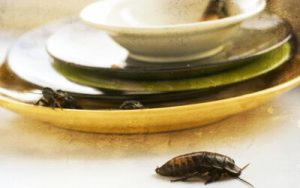
Cockroaches might be just a pests to you, but they are some of the most intelligent insects among other bugs. To survive, they will adapt even to inhospitable environments where the crawlies will look for and find shelter, as well as means to eat and drink. As food sources, the roaches consider attractive:
- Sugary and starchy foods;
- Grease;
- Proteins;
- Decaying organic matter;
- Beer (the American cockroach);
Cockroaches can survive without water for about a week but eventually, they will have to find and migrate to a water source. Furthermore, most of the warmth-loving cockroach species that are comfortable living outdoors will rush to settle in and continue to breed in your property, once the weather turns in.
What Happens if You Ignore a Cockroach Infestation
Bacteria, pathogens, and allergens are commonly carried by cockroaches, making them a dangerous public health hazard. Among the bacteria they spread are Salmonella and E. coli, which can cause food poisoning, diarrhea, and other gastrointestinal problems.
A cockroach population can multiply rapidly in a short time. Many people experience anxiety and stress due to a cockroach infestation. The fear of encountering these pests at night, combined with the health risks they pose, can make homeowners feel uncomfortable and even cause sleep disturbances.
Cockroaches chew on paper, fabric, books, and even electrical wiring, potentially causing damage to stored documents, upholstery, and appliances. In businesses, especially food establishments, a cockroach infestation can lead to legal action, fines, and reputational damage.
Check also: What is the First Thing You Should Do If You See Signs of Pest Infestation?
How to Check Your Home For Cockroaches
Cockroaches love tight and dark spots, such as crevices and cracks in plasterboard surfaces, as well as tiny spaces under furniture and in cupboards. Remember that roaches prefer warm and damp conditions, hence, you are likely to discover them in poorly ventilated, heated areas around your home. So, to succeed in locating the pest crawlies, ensure that you have the following:
- A probing tool – a good thin blade that is flexible enough to check small cracks in surfaces;
- A flashlight or headlamp – it will help you light your way in search of the vermin insects and take them by surprise;
- Mirror – a handy item to check under furniture, machinery or equipment and in other hard-to-reach places;
- Plastic sheet – in case you need to lie down on the ground on damp or dusty surfaces;
- Sticky traps – this is a store-bought monitoring product – perfect for catching the health-hazardous pests.
Common Cockroach Species in the UK Homes
The UK is home to four types of roaches:
- German cockroach – Blatella germanica – The German cockroach is average in size, reaching about 1,5 cm in length. You can differentiate them from other roaches quite easily. They have two dark stripes on their light-brown thorax. You’ll most likely spot them in your kitchen or bathroom, as they like being near food and water.
- Oriental cockroach -Blatta orientalis – This type of roach is much larger than the German and grows up to 3 cm in size. It’s black or dark brown in colour and loves breeding in cool, damp and dark places. You’ll spot the Oriental cockroach in basements, sheds, garages, near pipeworks and drains.
- American cockroach – As mentioned above, the American cockroach is not native to the UK. It’s one of the largest species, reaching over 4 cm in size. The insect is red-brown in colour. It prefers humid conditions and it can be often found in sewers and near drains, as well as on the grounds of animal-rearing facilities, such as zoos and farms. The female and her offspring can produce over 800 roaches in one year.
- Brown banded cockroach – Supella longipalpa – The Brown banded cockroach is the least common type that can cause a roach infestation concern in the UK. Rather small in size (about 1 -1,5 cm), the insect is easily identifiable by its yellow-brown stripes across its abdomen, hence its name. This type of roach feeds on stuff that has high content of starch.
How to Get Rid of a Cockroach Infestation
Cockroach pest control methods vary in their effectiveness and often to succeed in combating the problem, you need to call for professional cockroach extermination service. Most over-the-counter insecticides, designed to kill cockroaches, may suppress the pest population but with limited results. Hence, a set of measures are always recommended, in order to eliminate the infestation. As mentioned earlier in our post, you can fit numerous sticky traps, which not only monitor the size of the colony but also reduce it.
Still, our advice is to limit their access to food, water and shelter, and this way, prevent an infestation from developing in the first place, as well as ensure that the risk of recurrences in the future is brought to a minimum.
How to Prevent a Cockroach Infestation
So, the most effective way to prevent cockroaches from taking a liking to your home is to deny them access to nutrients and water, as well as to places where they can hide and breed undisturbed. Here’s your final takeaway on various pest proofing and prevention techniques that you can easily apply at home to avoid a cockroach infestation:
- Clean and sanitise – Keep rubbish bins tightly closed. Clean regularly all surfaces by vacuuming thoroughly food remnants from in between floorboards and underneath furniture.
- Keep your home in a good state of repair – Any pipe leaks or faulty fixtures in bathrooms and kitchens are an inviting water source for the pesky roaches.
- Store food securely – Food needs to be kept in airtight containers or in secure cupboards. This includes animal or pet food, as well. On that note, get into the habit to remove your dog’s food and water bowls at night.
- Seal all possible points of entry – Cracks and crevices in baseboards, around cables and pipes, or spaces under doors are all possible entry points for the determined roach.
- Ventilate and reduce moisture levels – It’s well-documented that properties without an air-conditioning system or adequate ventilation in hot and humid climates are prone to cockroach infestations. Place a dehumidifier in susceptible places, such as basements and laundry rooms.
- Declutter – Clear away unused items, empty cardboard boxes, old equipment and disused furniture from any storage rooms in your property (the basement, the attic, the garage).
- Cut down garden vegetation – Some cockroach species happily thrive outdoors in overgrown areas and move into your house when the cold weather sets in.
- Get a cat – It may not help you kill an existing colony of roaches but a feline friend may deter the pest from settling in. A cat will also point at the problem by presenting you with a dead specimen as a gift. It may also direct you to the insects’ hiding “headquarters”, as long as you are observant enough to spot when your pets hanging around and staring strangely at a small hole in the baseboard moulding. Well, it could be sensing a rat, of course, but that’s is for another topic.
Read more: How to Avoid Cockroaches When Moving
We provide helpful information according to the expertise and knowledge of the pest technicians. However, we don’t offer any medical advice.




